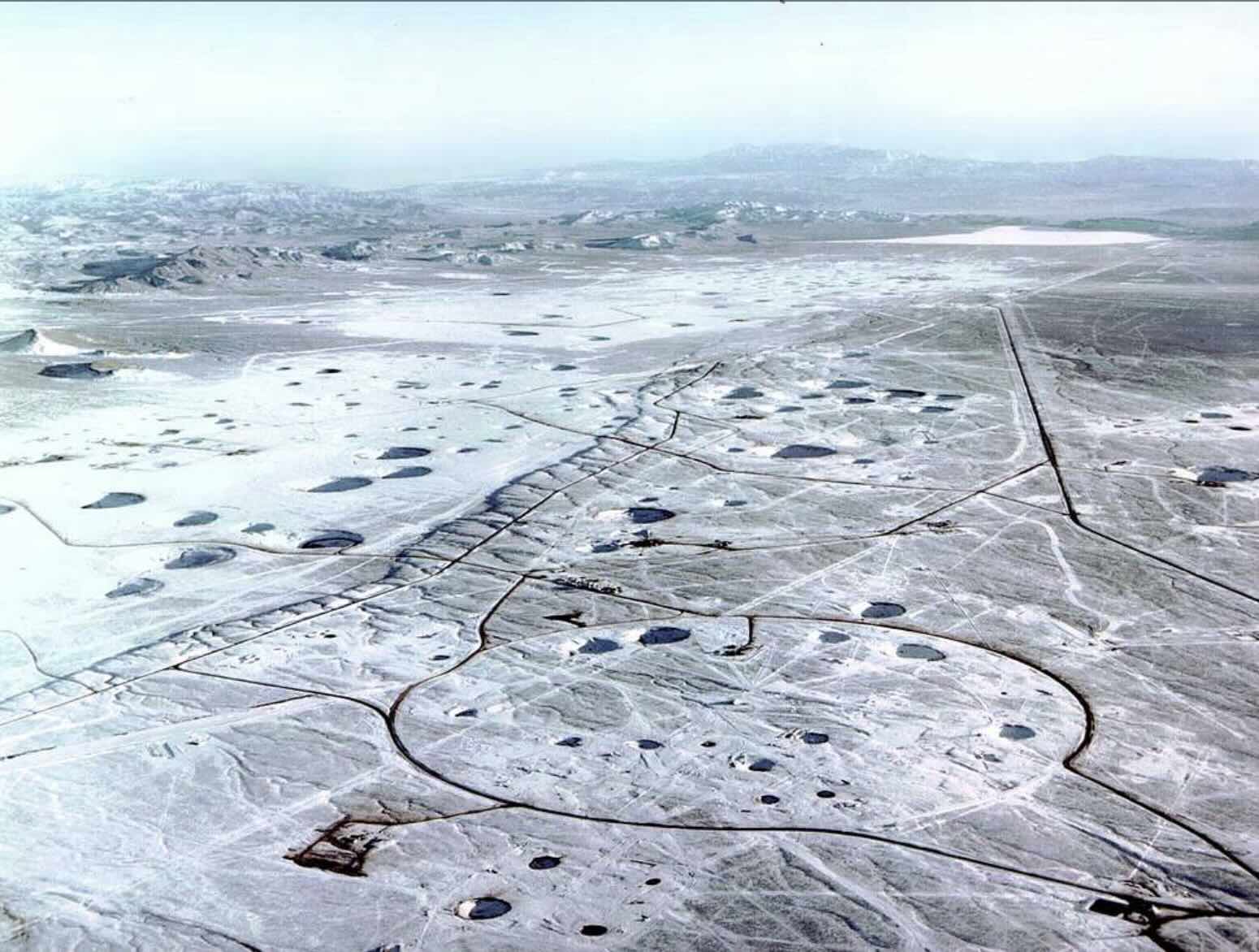


Recent remarks by President Donald Trump about restarting United States nuclear tests “on an equal basis” with Russia and China, followed by an order to “start” testing, have created uncertainty in Washington and alarm in Moscow.
Russia has responded by instructing officials to prepare options for resuming tests at Novaya Zemlya if the United States moves first. For European governments and NATO planners, this debate reopens questions about deterrence, arms control and the credibility of nuclear guarantees.
Since 1992 the United States has observed a unilateral moratorium on explosive nuclear testing, while maintaining the Nevada National Security Site (NNSS) in a condition that would allow tests to resume. Full-scale underground tests involve detonating a nuclear device in a tunnel or shaft at sufficient depth to “contain” the explosion. In practice, such tests can still create seismic disturbances, subsidence craters and, in some cases, leaks of radioactive gas into the atmosphere or groundwater.
Current US policy relies instead on “science-based stockpile stewardship”, combining high-performance computing, non-nuclear experiments and so-called subcritical tests. In subcritical experiments, small quantities of plutonium are subjected to chemical high explosives to generate extreme pressures and temperatures, but the amount of fissile material is kept below the point at which a self-sustaining chain reaction can occur.
These tests, conducted deep underground at NNSS facilities such as PULSE, produce data on ageing warheads without violating the US moratorium or the definition of a “nuclear explosion” under the Comprehensive Nuclear-Test-Ban Treaty (CTBT).
Trump’s recent statements have blurred the distinction between such subcritical work and a return to full underground detonations. While his social media comments and a subsequent order suggested a restart of nuclear weapons testing, officials have since indicated that the White House was referring to non-explosive or subcritical activities. Russia has demanded clarification, warning that any confirmed US move towards explosive testing would trigger reciprocal steps.
Environmental implications would differ sharply. Subcritical experiments are designed to keep radioactive material confined within underground chambers, with no venting. Underground explosive tests, by contrast, carry a higher risk of leakage and long-term contamination of rock and groundwater, even if atmospheric fallout is far lower than in atmospheric tests of the 1950s and 1960s.
Behind the technical dispute lies a broader question: how “safe” and reliable can nuclear weapons be without live testing? Military planners want high confidence that warheads will detonate as designed if ever used, and that they will remain safe in storage, transport and accidents. Over decades, warhead components age, materials change and design margins become less certain. Subcritical tests and advanced simulations are intended to monitor these effects and reduce uncertainty.
Some US voices argue that, after more than 30 years without full-scale tests, confidence in parts of the arsenal could erode and that occasional underground detonations might be needed to validate new designs or life-extension programs. Former Trump national security adviser Robert O’Brien has publicly called for renewed testing and expanded production of plutonium components. Arms control specialists counter that current stockpile stewardship methods are sufficient and that breaking the testing moratorium would yield limited technical benefit while undermining broader non-proliferation norms.
For non-nuclear states, the notion of “safe” nuclear weapons is largely seen in political rather than technical terms. Any visible return to test explosions by a recognised nuclear-weapon state would be read as renewed arms racing and could encourage others, including China, India, Pakistan or North Korea, to conduct their own series. The CTBT, although not in force, has created a de facto global ban on explosive tests; Russia’s 2023 decision to revoke its ratification, while pledging to mirror US behaviour, has already weakened that regime. A US test would give Moscow a ready justification to follow suit.
The renewed testing debate sits alongside increasingly explicit nuclear rhetoric from Moscow. Since the full-scale invasion of Ukraine in 2022, President Vladimir Putin and senior Russian officials have repeatedly referred to Russia’s strategic arsenal when warning NATO states against deeper involvement. In 2024 Russia adopted a revised nuclear doctrine that broadens the conditions under which nuclear weapons might be used, including in response to large-scale conventional attacks backed by nuclear-armed states, and subsequently formalised the revocation of CTBT ratification.
More recently, Putin has instructed officials to examine options for resuming nuclear tests if the United States does so, while insisting that Russia does not currently need to use nuclear weapons in Ukraine. For its part, the United States continues to emphasise that its subcritical experiments remain within existing treaty understandings, even as Trump’s language suggests a willingness to match any Russian or Chinese move perceived as eroding the testing norm.
For European allies under NATO’s nuclear umbrella, this signalling has concrete implications. It complicates long-term planning for the Alliance’s nuclear posture, which already includes the modernisation of US gravity bombs in Europe and deployment of dual-capable aircraft, and intersects with US plans to base new long-range missiles on the continent. It also raises questions about crisis management: if underground tests by one side prompted reciprocal tests by the other, the political impact on public opinion and alliance cohesion could be significant even if the strategic balance changed little in technical terms.
European governments have consistently supported the CTBT and backed the International Monitoring System that verifies compliance. A return to explosive testing by any major power would therefore run against declared EU policy and longstanding NATO interest in predictable arms control frameworks.
As nuclear testing returns to political debate in the Trump–Putin era, the core issue for Europe is less the specific yield of any future underground shot than the erosion of agreed constraints. Deterrence, arms control and non-proliferation have, for three decades, rested on the assumption that nuclear explosions belong to history. The current rhetoric in Washington and Moscow is testing that assumption, and NATO planners must factor that possibility into their calculations.